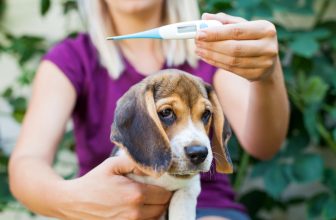
Types of Cysts on Dogs and How to Treat Them – Dogster
Cysts are abnormal growths that can appear pretty much anywhere on a dog’s body. What cysts on dogs look like, how they are diagnosed and how they are treated depends on the type of cyst. Dr. Debra Eldredge, veterinarian at SeniorTailWaggers and author of “Dog Owner’s Home Veterinary Handbook,” and Dr. Chyrle Bonk, veterinarian at SeniorTailWaggers, talk to Dogster about the types of cysts on dogs.
Dog got a cyst? Your veterinarian must first diagnose it because the type of cyst affects the type of treatment needed to remove it and keep it from coming back. Your vet will look at the contents under a microscope to determine the kind of cyst.
Here are 5 types of cysts on dogs, what they look like and how to treat them:
True cysts on dogs
True cysts on dogs are usually found near the eyelid or ear and are a translucent or dark-colored lump with a secretory layer, explains Dr. Bonk. They can be filled with fluid or be solid and are caused by blocked ducts in the skin, adds Dr. Eldredge.
A vet will remove a true cyst on your dog by removing the gland and secretory lining to keep the cyst from coming back, explains Dr. Bonk.
False cysts on dogs
A false cyst on a dog does not have the secretory layer that continues to cause the cyst to fill, even if drained. Dr. Bonk explains that most false cysts are caused by trauma – including injections – or bleeding that leads to tissue death. The tissue dies and the area fills with fluid. False cysts are usually dark in color.
Because it’s not a real cyst, draining and treating the traumatized skin usually prevents the false cyst from returning.
Sebaceous cysts on dogs
A blocked sebaceous gland in the skin can cause cysts on dogs. These glands produce an oily sebum to keep hair and skin hydrated and healthy, explains Dr. Bonk. This type of cyst is usually found on the head, legs, chest and neck. They may be light or dark in color.
Treatment for sebaceous cysts can range from warm compresses and antibiotics to surgically removing the cyst, including the secretory lining.
Follicular cysts on dogs
As the name implies, follicular cysts on dogs occur at the hair follicle when they become blocked, usually from trauma or pressure. Dr. Bonk explains that some breeds of hounds and hairless dogs are more prone to follicular cysts.
The range of treatment for a dog hair follicle cyst is the same as sebaceous cysts in dogs.
Dermoid cysts on dogs
Dermoid cysts on dogs are rare and are really only seen in breeds like Rhodesian Ridgebacks, explains Dr. Eldredge. The cysts are formed during the puppy’s development in the womb from an incomplete closure of the epidermis layer of the skin, shares Dr. Bonk, and may not be noticed until later in life.
Due to their nature, dermoid cysts are complicated to treat. Imaging is sometimes used and they usually require surgery for removal. Dermoid cysts that involve the spinal cord may require a referral to a specialist to remove or tie off, adds Dr. Bonk.
If you see a growth on your dog, schedule a vet appointment, even if you think it’s a false cyst. And while cysts are usually non-cancerous, having a vet confirm that will give you peace of mind as a dog owner.
<
Credit Source link







